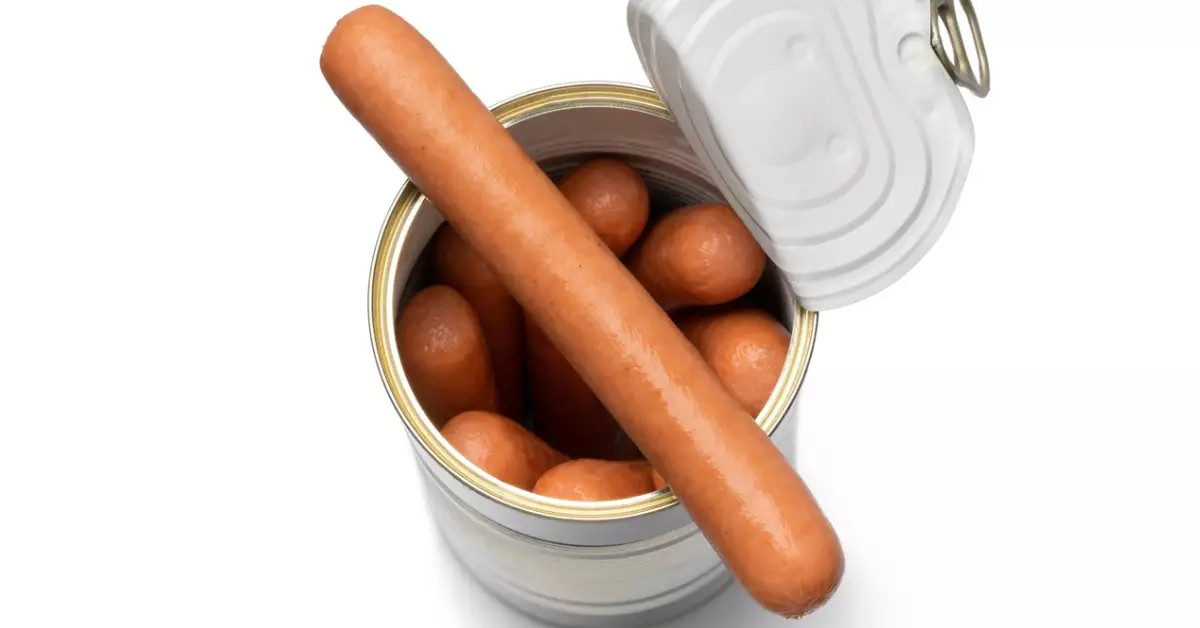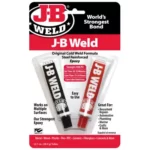Canning, a technique born out of necessity, has transformed into a cherished hobby for many and an essential skill for self-reliance enthusiasts. The process was developed in the 18th century as a solution to preserving food, especially during harsh winters or long sea voyages. Among the myriad of food items you can preserve, hotdogs have become increasingly popular for their convenience and versatility.
Canning hotdogs may seem unusual, but it’s an effective way to store these crowd-pleasers for long periods, without the need for refrigeration. With canned hotdogs on hand, you can quickly pull together a meal, whether you’re in a hurry, out camping, or amid a power outage.
The realm of home canning embraces a wide array of food items, and hotdogs, given their high salt content and compatibility with heat treatment, are a fitting candidate for canning. So let’s journey through this process together, gaining new perspectives on food preservation, safety, and sustainable living.
The Basics of Canning
Preserving food through canning is an engaging practice that combines science and culinary arts. To begin, it’s crucial to understand what canning is and why sterilization is paramount in this process.
What is Canning?
Canning is a method of preserving food by processing and sealing it in airtight containers. The process eliminates microorganisms that cause food to spoil, extending the shelf life of the food product, in this case, hotdogs.
Importance of Sterilization in Canning
Sterilization plays a critical role in the canning process, as it ensures the elimination of microorganisms that can cause foodborne illnesses. Using properly sterilized jars and lids is integral to achieving a safe and successful canning outcome.
Tools Required for Canning Hotdogs
Canning hotdogs at home requires specific equipment to ensure both safety and effectiveness.
Essential Canning Equipment
Essential tools for canning include a pressure canner, jar lifter, wide-mouth funnel, and bubble remover/headspace tool. Additionally, you’ll need clean cloths to wipe jar rims and handle hot equipment.
Choosing the Right Jars and Lids
Select jars that are specifically designed for canning, ensuring they are free of cracks or chips. Metal lids with sealing compound are preferable, along with matching metal bands.
Importance of a Quality Pressure Canner
A pressure canner is vital when canning hotdogs due to their low acidity. Unlike boiling water canners, pressure canners reach higher temperatures, necessary to destroy dangerous bacteria such as botulinum toxin.
Preparing Hotdogs for Canning
Once you have the necessary tools, the next crucial step is the preparation of hotdogs for canning. This process involves selecting the right hotdogs, pre-canning activities, and deciding whether pre-cooking is necessary.
Selecting the Best Hotdogs
Your choice of hotdogs can significantly impact the quality of your canned products. Here are some factors to consider when selecting hotdogs for canning:
- Quality: High-quality hotdogs generally yield better results. Opt for brands with a good reputation and positive reviews from consumers.
- Fat Content: It is best to avoid hotdogs with high fat content, as the excess fat could interfere with the sealing process during canning.
- Ingredients: Aim for hotdogs with fewer additives. Excess sodium or artificial ingredients may alter the taste after canning.
- Size: Depending on the size of your jars, select hotdogs that will fit well. Typically, standard-sized hotdogs are suitable for canning.
Pre-canning Preparation Steps
The success of your canning process begins with how well you prepare the hotdogs. Follow these steps to ensure you are well set for the canning process:
- Washing Jars: Prior to filling the jars, they should be washed thoroughly with warm soapy water. Rinse well to ensure no soap residue is left behind.
- Drying Jars: Dry the jars completely to avoid diluting the broth or water you’ll be using in the canning process.
- Packing Jars: Hotdogs should be packed into the jars tightly, but without squashing them. This will ensure that you make the most of your jar space while also allowing for proper heat distribution during processing.
- Leaving Headspace: It is important to leave about 1 inch of space at the top of the jar. This space, known as headspace, allows room for the food to expand during the processing stage without compromising the jar’s seal.
Pre-cooking Hotdogs: Necessary or Not?
While some individuals prefer to pre-cook their hotdogs before canning, it’s not a necessity. Here’s what you need to know about pre-cooking:
- Blanching: If you choose to pre-cook, you can blanch the hotdogs by briefly boiling them. This can help remove any excess fat that might interfere with the canning process.
- Raw Pack: Most canners, however, prefer to raw pack hotdogs. This means that the hotdogs are placed in the jar uncooked. This method is acceptable since the hotdogs will get fully cooked during the pressure canning process.
The Canning Process
Having prepared the hotdogs, we now transition into the canning process itself. This stage involves filling the jars with hotdogs and processing them in a pressure canner.
Step-by-step Guide to Canning Hotdogs
Here’s a detailed breakdown of how to can hotdogs:
- Fill your pressure canner with the recommended amount of water (usually 2-3 inches deep) and place it on the stove over medium heat. It’s essential to start warming your canner early since it takes time to build pressure.
- Pack hotdogs into jars, standing them on end. You can use a jar funnel to make this process easier and cleaner.
- Once the jars are packed, add boiling water, broth, or tomato juice over the hotdogs, maintaining the 1-inch headspace. This liquid aids in heat transfer during processing, ensuring that your hotdogs are cooked evenly.
- Wipe the rims of the jars with a clean cloth to remove any food residues that might prevent a proper seal.
- Place the lids on the jars, ensuring the sealing compound aligns with the jar’s rim. Screw on the metal bands until they’re finger-tight. Do not overtighten as this could lead to seal failure.
- Using a jar lifter, carefully place the jars in the canner. The jar lifter provides a secure grip and keeps your hands at a safe distance from the heat.
- Lock the canner lid in place and turn up the heat. Allow the canner to vent steam for 10 minutes before adding the weight or closing the vent port.
- Once the canner reaches the correct pressure, adjust the heat to maintain that pressure. Process the jars for the recommended time based on your altitude and jar size.
- After processing, turn off the heat and let the canner cool naturally. This could take anywhere from 30 minutes to an hour. Opening the canner prematurely could result in liquid siphoning out of the jars, leading to seal failures.
- Using the jar lifter, carefully remove the jars from the canner and let them cool undisturbed for 12-24 hours. This allows the lids to seal fully.
How to Use a Pressure Canner
Pressure canning can be intimidating, but with practice, it becomes straightforward. Always follow the manufacturer’s instructions for your specific canner model.
Time and Pressure: Key Factors
The processing time and pressure are essential factors in canning hotdogs. As a general rule, process pint jars for 75 minutes and quart jars for 90 minutes at 10 pounds of pressure.
Safety Considerations for Canning Hotdogs
Canning at home comes with its fair share of safety considerations, ensuring both the process and the final product are safe.
Risks Involved in Home Canning
Improper canning techniques can lead to foodborne illnesses, including botulism, a potentially fatal illness caused by improperly canned, jarred, or preserved foods.
Ensuring Food Safety: Best Practices
Always follow recommended processing times and pressures for your altitude. Moreover, never consume home-canned goods that show signs of spoilage such as a bulging lid, leaking, or an off smell.
Shelf Life of Canned Hotdogs
If properly canned and stored in a cool, dark place, canned hotdogs can last up to 2-3 years. Always check for signs of spoilage before consuming.
Troubleshooting Canning Issues
Occasionally, you may encounter issues during the canning process. Being aware of these problems and knowing how to resolve them is key to successful canning.
Common Canning Problems and Solutions
From jar breakage to failed seals, the canning process can present several challenges. Each of these issues has a solution, such as adjusting headspace or processing time.
Why Canning Might Fail: Understanding Mistakes
Canning failures can occur for various reasons, including inaccurate processing times, temperatures, or even using the wrong size of jar lids.
How to Detect and Deal with Spoilage
Spoilage is a concern with home-canned goods. Telltale signs of spoilage include off-smells, mold, or gas bubbles when the jar is opened. When in doubt, it’s best to discard the product.
Frequently Asked Questions
Can I Use Any Type of Hotdog for Canning?
While you can can any type of hotdog, it’s best to use high-quality, low-fat hotdogs for optimal results.
Can I Use a Boiling Water Canner Instead of a Pressure Canner?
No, due to the low acidity of hotdogs, a pressure canner is required to reach the high temperatures necessary to kill off harmful bacteria.
How Long Do Canned Hotdogs Last?
If properly canned and stored in a cool, dark place, canned hotdogs can last up to 2-3 years.
Conclusion
Canning hotdogs at home is a practical, satisfying way to build up a pantry of ready-to-eat foods. Not only does it ensure a stash of quick meals, but it also carries the charm of a time-honored culinary practice, reminding us of the beauty of self-reliance.
From selecting the right tools and quality hotdogs, through the stages of preparation and canning, to understanding the safety measures, the process may seem elaborate. But it’s the expertise acquired through this journey that makes every canned jar a testament to your effort and dedication.







